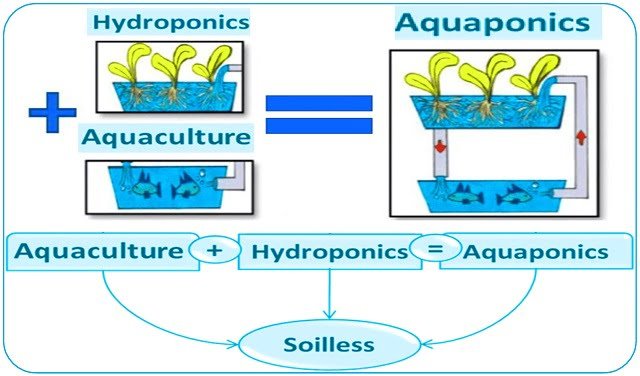
Aquaculture has become a key industry to meet the growing global demand for fishery products. However, the use of antimicrobials in this sector, while crucial for preventing and treating bacterial infections in fish, can have adverse consequences if not managed properly.
Inappropriate use of antimicrobials in aquaculture can lead to the emergence of antibiotic-resistant bacteria, which can be transmitted to humans through food consumption, creating a serious public health issue.
Researchers from the Institute of Meat Hygiene and Technology (Serbia) and the Scientific Veterinary Institute ‘Novi Sad’ (Serbia) published a literature review to provide a comprehensive overview of the current state of knowledge on antimicrobial resistance (AMR) in aquaculture environments. The review highlights the most relevant aspects of antimicrobial use in aquaculture, the development and transfer of AMR, detection methods, alternative solutions and practices to antimicrobials, and the most effective risk mitigation strategies to combat AMR within the “One Health” (OH) concept.
AMR in Aquaculture: A Global Risk
AMR in aquaculture is of global importance, as fish, seafood, and other aquatic foods are a significant source of animal protein in many regions worldwide. A less-discussed aspect is the transmission of AMR through the consumption of fish meat, especially in ready-to-eat products that have not undergone heat treatment, such as sushi and cold-smoked salmon.
Studies have identified several resistant bacteria in the aquaculture sector, including Vibrio spp., Aeromonas spp., Streptococcus, and Edwardsiella, with resistance genes to antimicrobials such as β-lactams, tetracyclines, sulfonamides, macrolides, and fluoroquinolones. These bacteria represent a significant risk to human health and underscore the need to establish monitoring systems for antimicrobial resistance genes (ARGs) in microorganisms isolated from fishery products.
In summary, fish farms can become breeding grounds for resistant bacteria, which can then enter the food chain and the environment at large. This complex interaction between humans, animals, and the environment is often referred to as the One Health approach.
Mitigation Strategies Based on the “One Health” Approach
This study focuses on implementing effective strategies to mitigate AMR in aquaculture, based on the “One Health” (OH) concept, which recognizes the interconnectedness between human, animal, and environmental health. The following are some of the key recommended strategies:
- Strict Guidelines for Antimicrobial Use: Implementing rigorous guidelines for antimicrobial use is essential to avoid overuse and reduce the emergence of resistant bacteria.
- Improvements in Farm Biosecurity and Vaccination: Adopting disease control methods that include enhanced biosecurity measures and vaccination programs in aquaculture farms can reduce dependence on antimicrobials.
- Alternatives to Antibiotics: Promoting alternatives such as prebiotics, probiotics, immunostimulants, essential oils, peptides, and phage therapy can be effective in maintaining fish health without relying on antimicrobials.
- Feeding Practices and Genetics: Improving feeding practices and genetically selecting species more resistant to diseases are crucial approaches to minimizing the need for antimicrobials.
- Water Quality Monitoring and Wastewater Treatment: Maintaining strict water quality control and improving wastewater treatment is essential to prevent the release of resistant bacteria into the environment.
The Importance of Environmental Aspects in AMR
Traditionally, the contribution of the environment to the development of AMR has received less attention. However, including environmental aspects more prominently in OH efforts is crucial for predicting, detecting, and preventing health risks. This is especially important in low- and middle-income countries, where the integration of national action plans against AMR with the aquaculture production environment is limited.
Stay Always Informed
Join our communities to instantly receive the most important news, reports, and analysis from the aquaculture industry.
Successes in Reducing Antimicrobial Resistance
According to the study, the integrated approach to AMR control in aquaculture, based on the OH approach, has proven effective in reducing resistance. A notable case is Asia, where over the past two decades, the percentage of antimicrobial compounds with resistance above 50% (P50) in aquaculture decreased from 52% to 22%.
Conclusion
Proper management of antimicrobials in aquaculture is crucial to preventing AMR and protecting both human and environmental health. Strategies based on the “One Health” approach offer a comprehensive solution to address this global challenge, with a special focus on the inclusion of environmental factors and the promotion of alternatives to antibiotics.
Reference (open access)
Milijasevic, M., Babic Milijasevic, J., Petrovic, J., & Nastasijevic, I. (2024). Antimicrobial Resistance in Aquaculture: Risk Mitigation within the One Health Context. Foods, 13(15), 2448. https://doi.org/10.3390/foods13152448
Editor at the digital magazine AquaHoy. He holds a degree in Aquaculture Biology from the National University of Santa (UNS) and a Master’s degree in Science and Innovation Management from the Polytechnic University of Valencia, with postgraduate diplomas in Business Innovation and Innovation Management. He possesses extensive experience in the aquaculture and fisheries sector, having led the Fisheries Innovation Unit of the National Program for Innovation in Fisheries and Aquaculture (PNIPA). He has served as a senior consultant in technology watch, an innovation project formulator and advisor, and a lecturer at UNS. He is a member of the Peruvian College of Biologists and was recognized by the World Aquaculture Society (WAS) in 2016 for his contribution to aquaculture.




